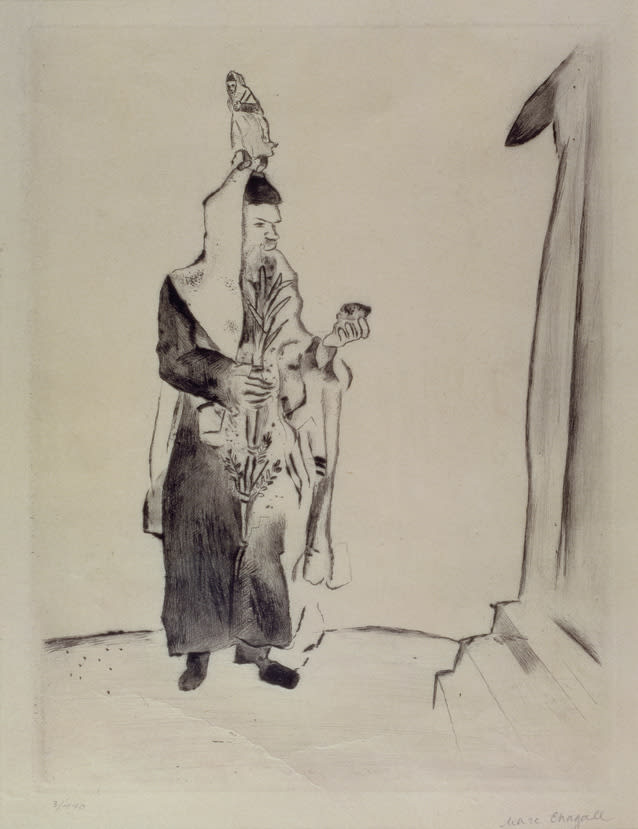
- Artist/Maker:
- Marc Chagall
- Bio:
- French, b. Belarus, 1887-1985
- Printer:
- Hermann Struck
- Bio:
- German, 1876-1944
- Publisher:
- Paul Cassirer
- Title:
- The Rabbi
- Portfolio/Series:
- Mein Leben (My Life)
- Date:
- 1922
- Medium:
- Etching on paper
- Dimensions:
- Sheet: 16 3/4 × 13 1/2 in. (42.5 × 34.3 cm) Image: 9 11/16 × 7 5/16 in. (24.6 × 18.6 cm)
- Credit Line:
- The Jewish Museum
- Accession Number:
- JM 172-67
- Copyright:
- © 2014 Artists Rights Society (ARS), New York / ADAGP, Paris
Not On View
Other plates from the portfolio in The Jewish Museum's collection such as Beside My Mother's Tombstone, The Rabbi and The Talmud Teacher come directly from the artist's charming, if quirky, text. The supplementary plate, The Rabbi is a reworking on copper of his 1914 oil Feast Day (Rabbi with Etrog). The reversal of the composition indicates his close reliance on the 1914 work. The holiday is obviously Sukkot, the fall harvest festival, in which blessings are recited over the symbolic citron and branches of palm, myrtle, and willow. The peculiar small figure standing on top of the rabbi's head poses questions for interpretation. Art historians have noted sources in Christian art for Chagall's handling of this image. For example, there is a similarity between the rabbi's prayer shawl and the drapery of the Madonna's cloth of honor in early Renaissance paintings; between the citron and palm branch and the traditional attributes of Christian saints. The personal nature of Chagall's vision, his curious use of Christian art-historical sources, and his possible visual play on Yiddish phrases for this print (and others) add further interpretive confusion. Such ambiguities, precisely what the artist desired, are expressed by his own ideas about not limiting the meaning of his works.
Information may change as a result of ongoing research.